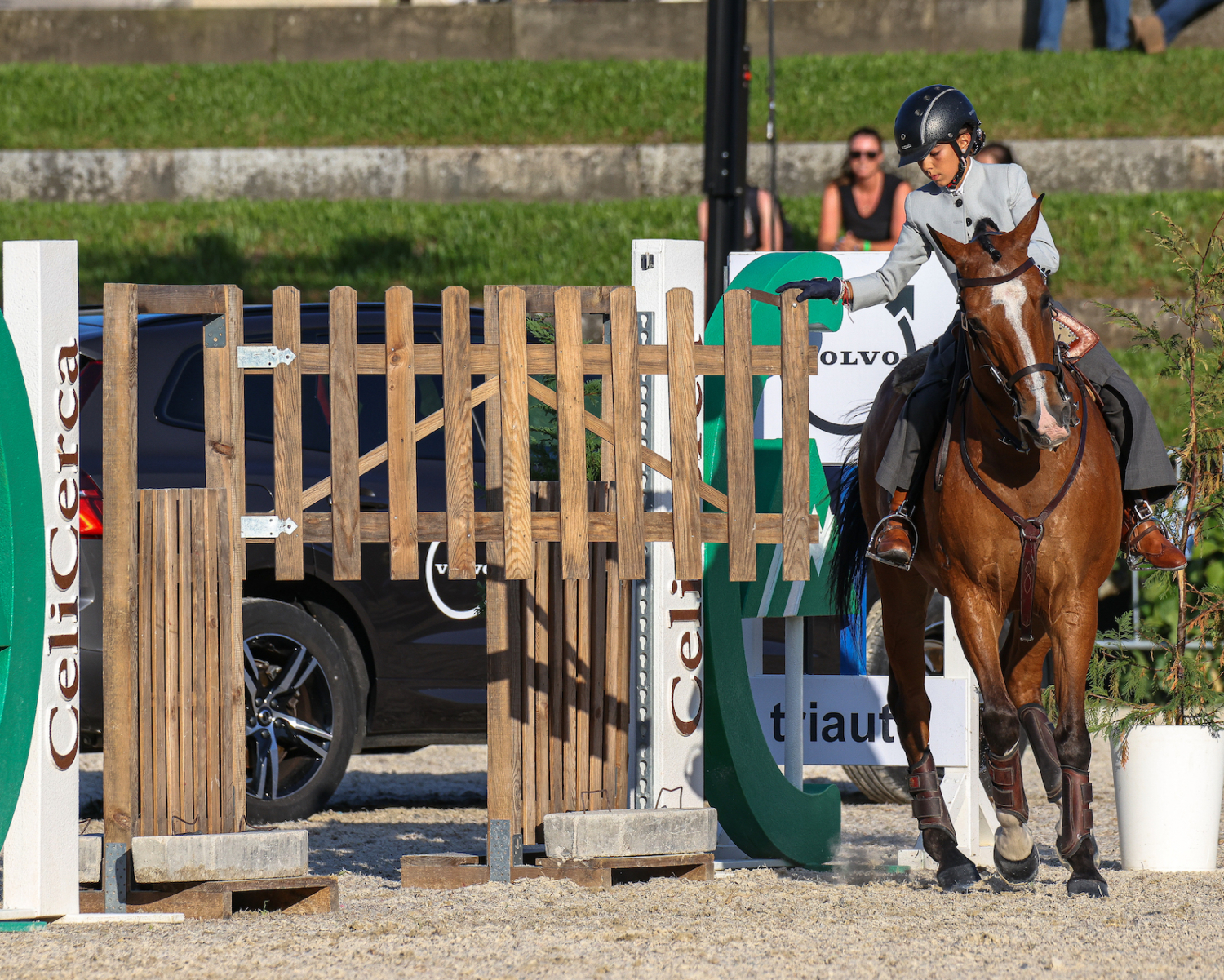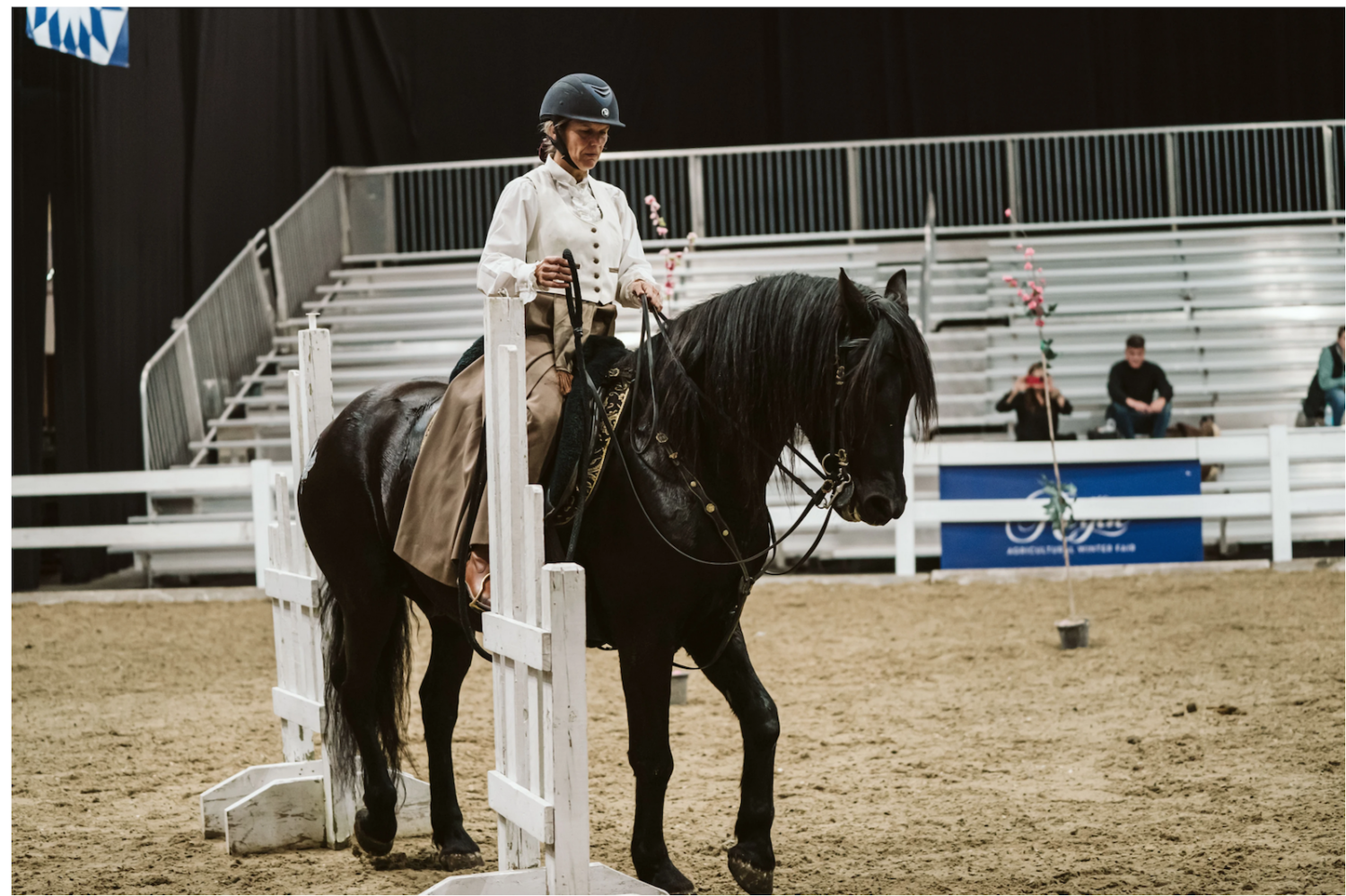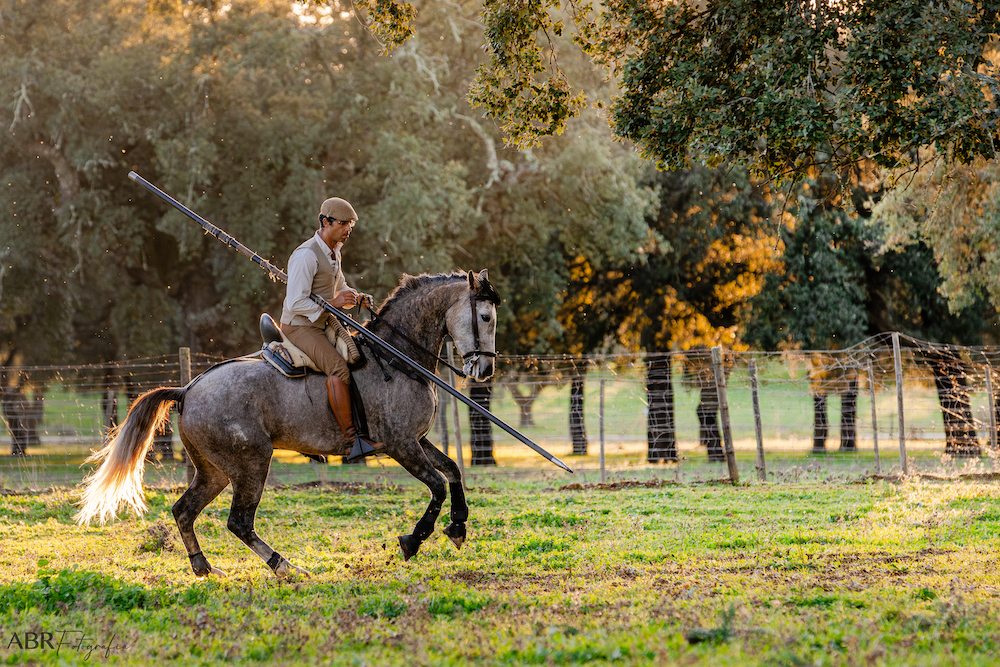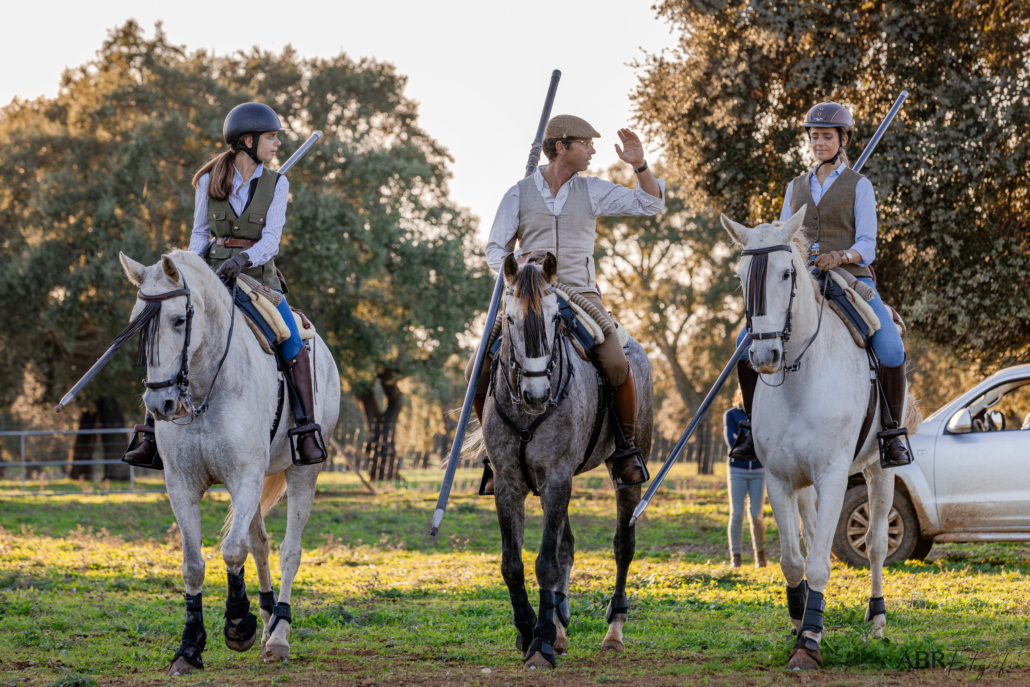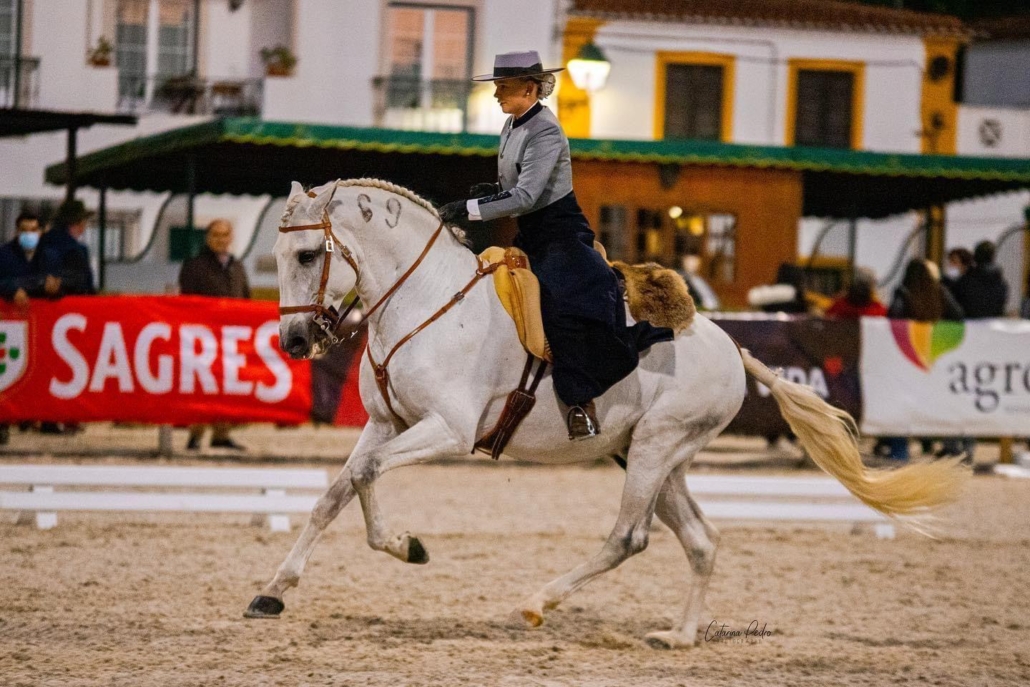Article by Lise LeBlanc forward by Teresa Burton
Images and Video supplied by Lise and ABR Fotos
Working Equitation is currently grabbing attention all over the globe and with good reason. It´s a sport that can be enjoyed by all generations of riders and suits many, many breeds of horses and ponies. It demands all kinds of skills in the different parts of the sport. is without a doubt a thrilling sport to watch even for those who are not equestrians.
The sport is born from the skills of traditional field work with horses and was founded by France, Spain, Italy and Portugal. The obstacles in the competition are carefully designed to reflect the many tasks faced in a days work.
This is part two in a series into the WE obstacles. Enjoy
Teresa Burton
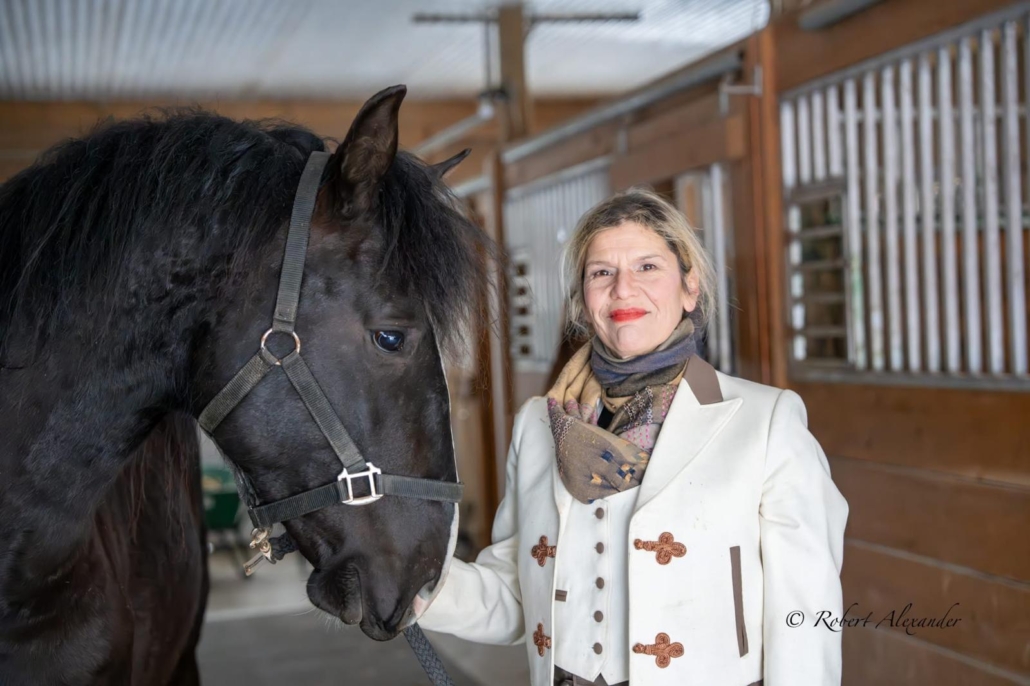
Lise LeBlanc – is a working equitation judge, trainer and enthusiast
Ever curious was keen to dive deeper into the sport last year had a week´s stay with Bernardo Moura Taveres to experience working out with the cattle and how the horses are trained.
This is part one in a series into the WE obstacles. Enjoy
The Gate Obstacle in Working Equitation
The gate obstacle in Working Equitation is either a solid gate or rope gate. In the speed phase the gate is rope. It is an obstacle required at the beginning levels. As such it is important to learn the steps, and start exposing the horse early. In my opinion it is an obstacle that requires a lot of training and finesse, however, it teaches vital skills that are often ignored. Turns on the forehand, and haunches, reversing in small measured steps help develop lightness of aids, suppleness and control. Rider and horse must be very connected within the language of the aids in order to open and close the gate correctly.
The Gate – Some of the criteria:
I will go through some of the judging criteria for the gate obstacle in Working Equitation and make connections to the significance associated with working the pen on an Iberian ranch.
The criteria:
1) Approach the gate perpendicular.
2) Transition to walk approximately one horse length from gate.
From trot (L1) or canter (L2+) a transition to walk is required approximately one stride away from the gate. The least amount of intermediate steps is desired. This shows balance and obedience.
3) Turn on the forehand when arrived at the gate
The horse is required to do a turn on the forehand at the gate and halt in position for three seconds before touching the latch.
4) Halt – parallel with the gate in good position to latch. Wait 3 seconds before touching the gate
5) Moving through the gate
There are actually four ways to move through the gate. We can pull or push the gate. We can travel forwards or backwards through the gate. It’s very important to know a forward and a backward execution because depending where the latch is, you may be required to travel forward or reverse. Moving through the gate the rider should demonstrate the horse’s responsiveness to all the aids; forward backward, turning the haunches and shoulder, and lateral steps. The horse should remain calm, yet obedient. The gate should open only enough so that the horse can go through easily, and not too wide or out of control. Moving through the gate should not require excessive steps nor excessive time.The horse should not interfere with the gate. Attention and flexion of the horse should be toward the gate.
In the field working cattle there are many gates. Some gates are used to access grazing pastures while other gates are used inside the pens which hold the livestock. The smaller gates might be opened and closed by one garrochista. The bigger gates, like this one inside the pen enclosure, might take two garrochistas; one will hold the cattle back, the other will execute the gate.
The gate obstacle in the sport of Working Equitation as in the field, is a test of lightness off the aids, obedience and rider effectiveness. There is simply no way I would have been able to close this heavy gate if Framboisa was not obedient to all her aids; forward, reverse, lateral, calm and willing.
Video – Framboisa closes the gate after the herd has been sorted. A second garrochista keeps the herd secure while Framboisa and I work to close the gate.
Read Part One – The Pen
Credits :
Text – Lise LeBlanc. FaceBook
Forwarded by Teresa Burton
Training in video Bernardo Moura Tavares
Farm in Alentejo Herdade da Carapuca
Top Image by ABR Fotos
Others and video provided by Lise De Blanc
